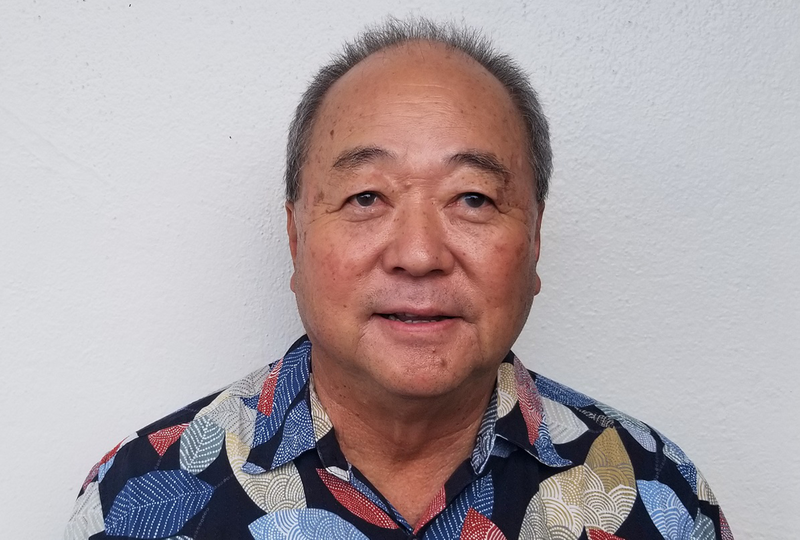Perspectives: Mike Miyabara

JULY 13, 2022
Michael T. Miyabara, FASLA, recently entered retirement after a nearly 50-year career as a landscape architect. He is the principal of Miyabara Associates LLC and his experience practicing in Hawaii and the Pacific region includes private and public sector projects involving community and site planning, urban design, resort landscape design, and recreational planning and park design.
What drew you to landscape architecture?
I was born and raised in Hawaii, considered to be the most isolated populated place on earth, and grew up in a rural community with an agricultural-based economy. Of course, we were connected to the rest of the world via TV and communication media, enjoying the privileges, conveniences, and awareness of the national and global community. The profession of landscape architecture was unknown to me until I left the Islands in 1968 for college at Utah State University in Logan, Utah. I was introduced to the curriculum via a roommate who was enrolled in the Landscape Architecture and Environmental Planning program. These were the days before the internet and social media. Computer technology was still in its infancy.
I had always enjoyed drawing, sketching, and drafting so the program seemed an attractive career path to pursue. Importantly, it was also a time when the environmental movement was in its early development spurred by Rachel Carson’s Silent Spring and the first Earth Day. Icons of the times included Ian McHarg, Lawrence Halprin, Hideo Sasaki, Garrett Eckbo, and Peter Walker among many other inspirational practitioners. Landscape architecture offered an opportunity to combine creative design with environmental responsibility, adding to the allure of the profession.
What has driven you professionally?
The professional scope of landscape architecture is vast and varied. There are sectors that range from natural resource preservation and planning to the design of private gardens and much more in between. My professional career’s primary focus has been the design and creation of spaces for people that are not only functional, but visually and sensually enjoyable. I have tried to incorporate timeless design principles — such as form follows function, indoor/outdoor connection, less is more, keep it simple, etc. — with a rational basis for design solutions. In addition to satisfying the project program requirements and client expectations, I’ve advocated that the final design also be based on other factors. These include site-specific considerations such as natural features and historical and cultural references. Place names also provides an important basis for an appropriate physical design theme and form. Together, incorporating these factors serve to add value and significance to a place.
What challenges has landscape architecture allowed you to address over the years?
Being a landscape architect on multi-disciplinary team projects, I was allowed the opportunity to effectively collaborate with architects, engineers, and other design professionals to develop successful projects during my nearly five-decade career. At times my participation enlightened others on what landscape architects can contribute to a project. I also learned a great deal from others resulting in a genuine collaboration that resulted in more innovative planning and design solutions. In some cases, I was able to invite additional professionals, artists, or other creative consultants thereby expanding the team’s capabilities.
What challenge would you give emerging leaders?
Change is inevitable, unpredictable, and inextricably ties us all together. Our world is in a constant state of evolution, evidenced by undeniable climatic and societal change. From a professional viewpoint, emerging leaders need to be sensitive and receptive to cues that impact the local, regional, national, and global environment in the immediate and distant future. No one could have accurately predicted the world we live in today even five years ago, however models can be developed and acted on to try to direct change in ways that result in positive effects or minimize detrimental impacts to the environment.
Where do you think the profession needs to go from here?
To be clear, landscape architects should continue to minimize the impacts of climate change and act to preserve and enhance natural systems. However, given the current state of the environment, landscape architects should be at the forefront of adaptive design and planning solutions. Water availability and management, for example is already a critical issue and will become more evident and critical in the future. Natural disaster response and waste material disposal measures are already issues we face today and will become further exacerbated in the years to come.
LAF's Perspectives interview series showcases landscape architects from diverse backgrounds discussing how they came to the profession and where they see it heading. Any opinions expressed in this interview belong solely to the author. Their inclusion in this article does not reflect endorsement by LAF.











